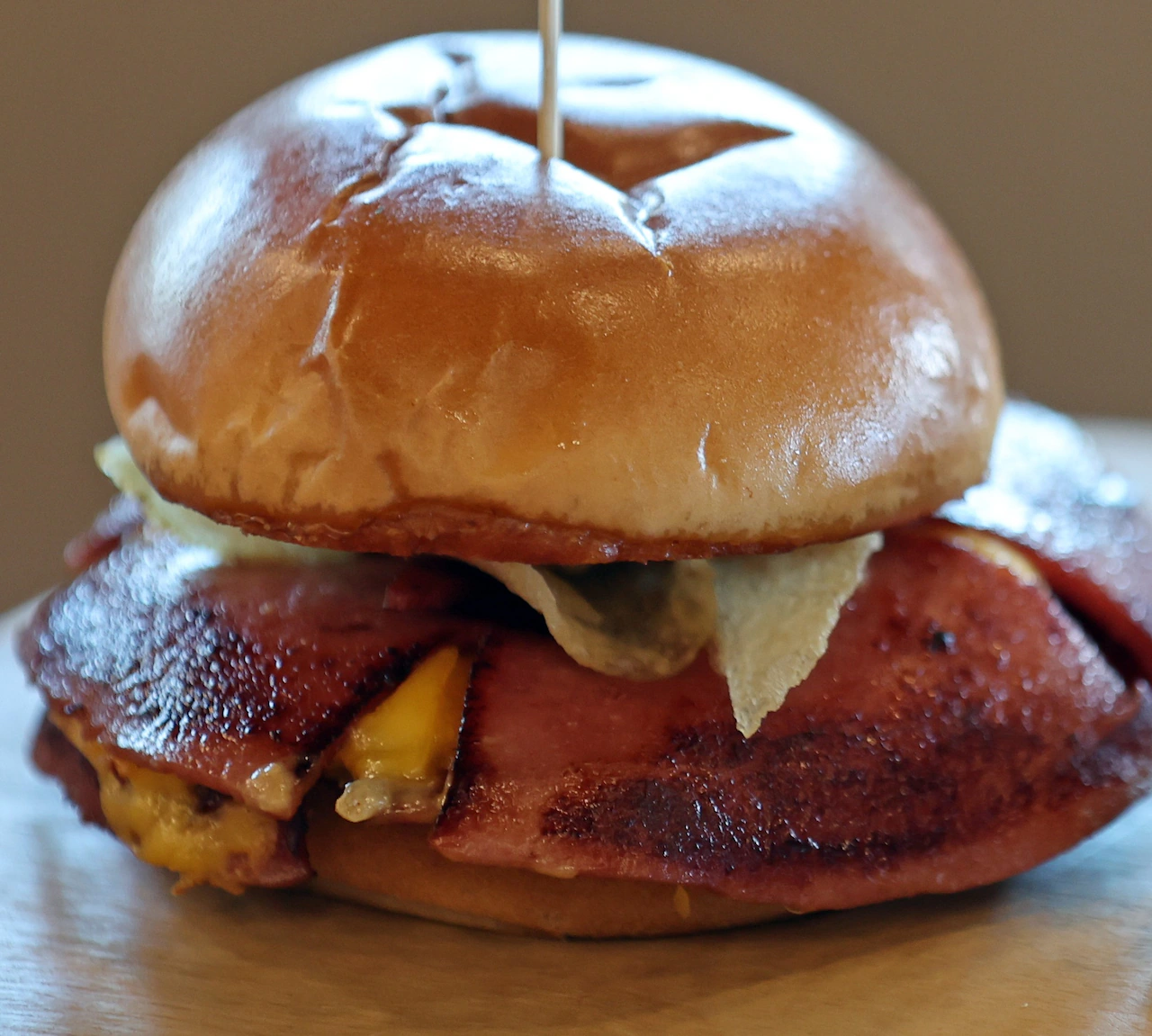
CLEVELAND, Ohio— At “Classic CLE” HQ, we get letters. Sometimes they’re for lost treasures; other times they’re for more regional or Midwest specialties.
Last week, someone wanted to know about fried bologna sandwiches — recalling that no less an authority than Michael Symon once had one on his menu at B Spot.
A sure way to get your letter to the top of the pile? Catch me while I’m hungry. So here we go:
Fried bologna is one of those “working-class comfort foods” that migrated north and got absorbed into the cultural DNA of cities like ours.
I had one at Progressive Field this year (pictured here… sigh, great season, Guards!). I regularly have them at places like Gunselman’s Tavern in Fairview Park, The Rowley Inn, Hail Mary’s in Westlake, TJ’s Butcher Block & Deli in Lakewood and Sirna’s in Bedford.
Swensons Drive-In’s version goes pretty hard, too — a quarter-pound dinner cut with mustard and onion, though they will let you customize.
I have my cousin Jeff to thank for this little food obsession, back when minor league baseball’s Buffalo Bisons used to be affiliated with the Cleveland Indians.
He introduced me to them after a baseball road trip there. Soon, I was making my own pilgrimages.
Here’s how the “fried bologna” CLE connection works, for those interested in such things:
Southern roots, Midwest migration
The fried bologna sandwich started as a Southern staple, especially in Appalachia, where bologna was an affordable everyday meat. Pan-frying it gave it a smoky, hearty flavor and turned a cheap ingredient into something satisfying.
During the Great Migration and waves of Appalachian migration in the 20th century, a lot of families from Kentucky, West Virginia, and Tennessee moved to industrial cities like Cleveland, Akron, Detroit and Pittsburgh for steel and factory jobs.
They brought their food traditions with them — fried bologna being one of the most iconic. It was a meal as tough and frugal as the people eating them during (or after) long, blue-collar shifts.
Cleveland’s working-class embrace
Cleveland’s East Side, West Side and ethnic enclaves all absorbed different food traditions, but bologna sandwiches were universal because they were cheap, filling and available at corner bars, delis and factory cafeterias.
Local taverns, diners and even church fish-fry–style events started featuring fried bologna sandwiches. Bologna was often sourced from regional sausage makers (like “stadium” mustard vs. yellow mustard, everyone has a preference on whose recipe is the best.)
Why Cleveland stuck with it
Unlike some cities where it faded away, in Cleveland, the fried bologna sandwich became nostalgic bar food. It’s on menus at iconic local spots like The Rowley Inn, Sokolowski’s University Inn (before it closed) and numerous corner bars in neighborhoods like Slavic Village and Old Brooklyn.
It also plays into Cleveland’s broader food identity: working-class, unpretentious, hearty, and proud of its immigrant/Appalachian mix. Just like pierogi or Polish Boy sandwiches, fried bologna became part of the “Cleveland table.”
How it compares elsewhere
Buffalo’s fried bologna is usually linked with Aunt Rosie’s Loganberry, yes — a regional soda pairing that reflects Western New York culture.
(Aside: Soda nerds will note that Loganberry started as a fountain drink in an amusement park in Fort Erie, Ontario and never migrated past another Erie — Pennsylvania — much to my personal chagrin. A story for another day).
In the Midwest at large, you’ll find fried bologna at county fairs, diners and VFW halls. But Cleveland elevated it to the point where it’s expected on a serious bar menu, right alongside wings and burgers.
Home vs. away
And the home version? Well folks in these parts customize them all kinds of ways. Some insist on them being built on plain white bread — “struggle-meal style.” Others insist on a bun that can hold up to the bologna’s firmness. Still others like to put chips on the sandwich.
The one at Progressive Field came that way.
Cleveland’s connection to fried bologna sandwiches comes from its Appalachian and Southern migrant roots, working-class tavern culture and its embrace of unfussy “soul food of the Midwest.”
It’s one of those food favorites that survived the transition from necessity to tradition — and in Cleveland, as it has in many other Midwestern bastions, it stuck.



